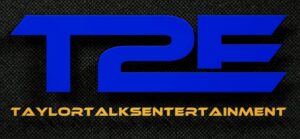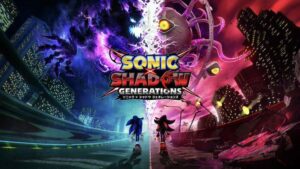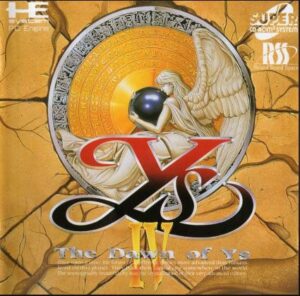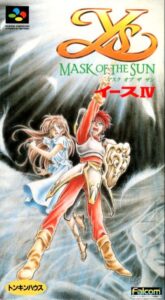Greetings and welcome everyone. This week we are continuing our Ys marathon and the next couple of games we are going to cover are very unique if only for the circumstances surrounding their development and release. Let us get started and dive right in, This is Ys IV: Mask of the Sun!
Development & Pre-Production
Now, following the release and mostly negative reception of 1989’s Ys III: Wanderers from Ys Falcom would take a step back from the exploits of everyone’s red-haired adventurer. Another Ys game wouldn’t see the light of day until 1993 and there were a couple of asterisks attached to those games. To start with, 1993 saw the release of two different Ys games for two different platforms by two different studios, both under the Ys IV moniker. Secondly, neither game was developed by series creator Nihon Falcom. So, let us start there…
After the release of Ys III, Falcom opted to focus on other projects, so 1993 saw the company release Brandish 2: Planet Buster for the PC-9801. That being said one thing to note about both of these outsourced Ys IVs is that the core writing of these games was not handled by said companies and instead helmed by Falcom themselves. The company gave script notes of what they intended Ys IV to be to both Tonkin House and Hudson Soft. Both studios would deviate from said instructions in their own ways, which would explain why despite having a similar core narrative, both titles ended up doing very different things.
We’ll talk more in detail about what Dawn of Ys saw fit to do when we cover it next week as I want to focus on Mask of the Sun right now. Development of this game was overseen by Tonkin House who had previously collaborated with Falcom to develop the Super Famicom and Super Nintendo versions of Wanderers from Ys. The less than exemplary quality of that port itself aside, this would be Tonkin House’s second and last collaboration with Falcom. In comparison to Hudson Soft, Tonkin was much less experienced as a developer, and we’ll see later on the consequences of that as we dive into how the game plays.
The game was initially developed only for the Super Famicom but would eventually come to Windows PC as part of Ys Complete Works, a PC only compilation of Ys I-V. A remake helmed by Taito and Arc System Works was released in 2005 titled Ys IV: Mask of the Sun- A New Theory, as well as a Japanese only release for mobile devices in 2006. Despite not being developed by Falcom, the music was composed by Falcom Sound Team with additional arrangements for the Super Famicom overseen by Cube Corporation Sound Team. Mask of the Sun and Dawn of Ys generally draw from the same source music but are used in different places across the pair of games. Additionally, there are a number of new compositions used exclusively in Mask of the Sun.
Synopsis & Writing
As mentioned in our previous Wanderers from Ys article, the series was not developed in chronological order with Mask of the Sun being set 2 years after the events of Ys I & II. Our tale begins with Adol standing on the beach of Esteria reflecting on his time with the twin goddesses Feena and Reah as well as his struggle against the likes of Dark Fact and Darm. This reflection is cut short when a message in a bottle washes ashore. The message hails from the far off land of Celceta claiming that the land is in grave danger and is in need of assistance.
This is all the motivation Adol needs as he leaves the land of Esteria behind without hesitation to investigate the land of Celceta. Upon arriving he finds the land under the siege of a demonic horde similar to Esteria’s in Ys I as well as the scheming ambitions of the Romn Empire who have their own agenda for the land of Celceta. Adol seeks to put an end to these foul ambitions all the while learning more about the mysterious Eldeen, the race that Feena and Reah are part of.
Mask of the Sun’s call to action feels very much like set dressing to get the story moving, but it does so in a rather appropriate character moment for Adol. Many likely wouldn’t get themselves involved in the struggles of a foreign land based SOLELY on the contents of a vague letter that washed ashore. But Adol’s wanderlust and thirst for adventure knows no bounds. One thing to keep in mind with this story is that until the 2012 remake Ys: Memories of Celceta, this was the canon story of Ys IV, seeing as Dawn of Ys greatly deviated from Falcom’s plot outlines.
Several key beats of the Celceta remake are on full display in this story, such as the scheming of Romn, the residents of Comodo Village being abducted, and even the main villains Gruda, Bami, and Gadis manipulating the lord of the land Eldeel. If you squint you can see the broad strokes of the story Falcom wrote but they are generally lost among the difference in Tonkin House’s interpretation of said script. The story and conflict of Mask of the Sun are rather surface level in their execution.
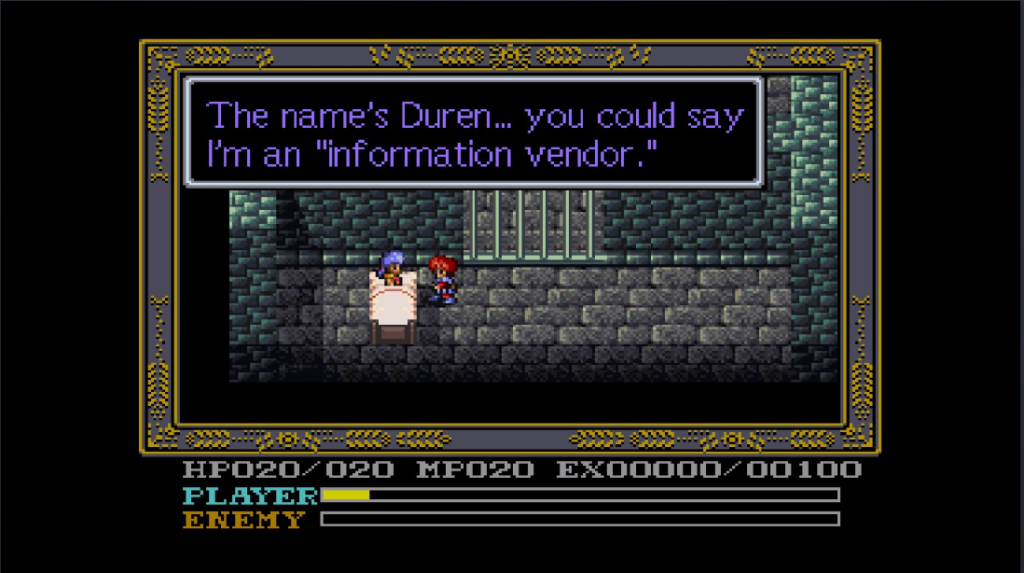
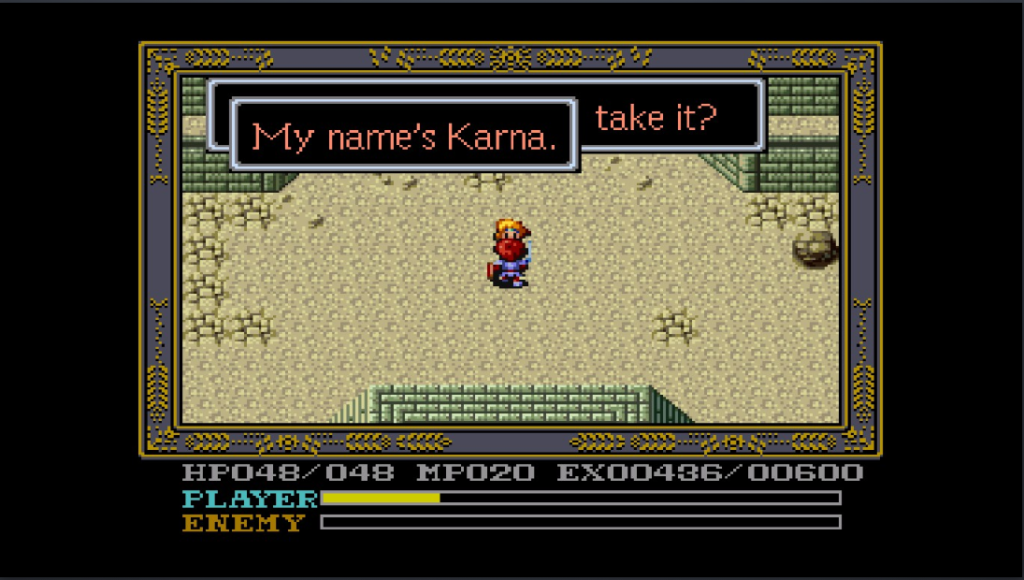
Eldeel is already corrupted into the dark winged God by the time Adol arrives in Celceta, yet we get character moments between him and Leeza that imply that he used to be a much more benevolent man. Unfortunately, this is as much depth as you are getting out of the antagonists in Mask of the Sun as the darkling trio comprised of Gruda, Bami, and Gadis are horribly one note as antagonists. Considering that those three are our main villains it leaves a very lackluster taste on the narrative as a whole. Adol works to stop them because of who he is, as The darkling trio does very little to motivate players to hate them, they fail to leave an impact and without getting too ahead of myself the remake didn’t do much to elevate them.
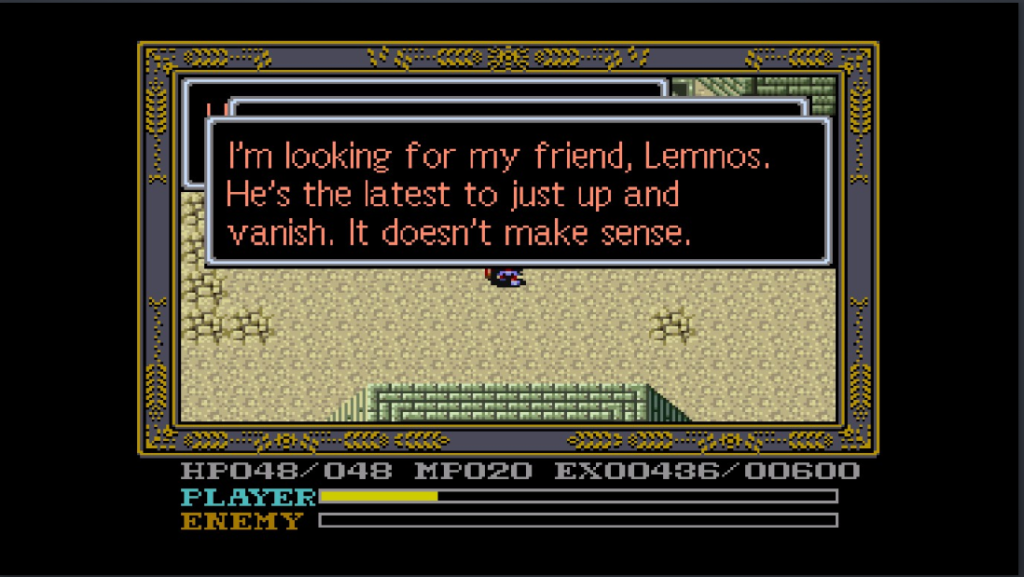
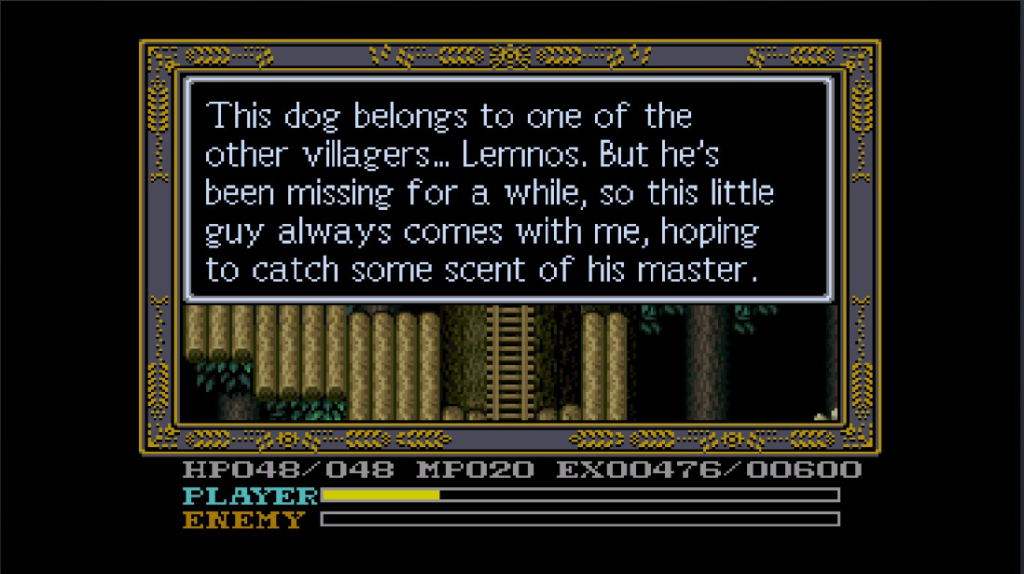
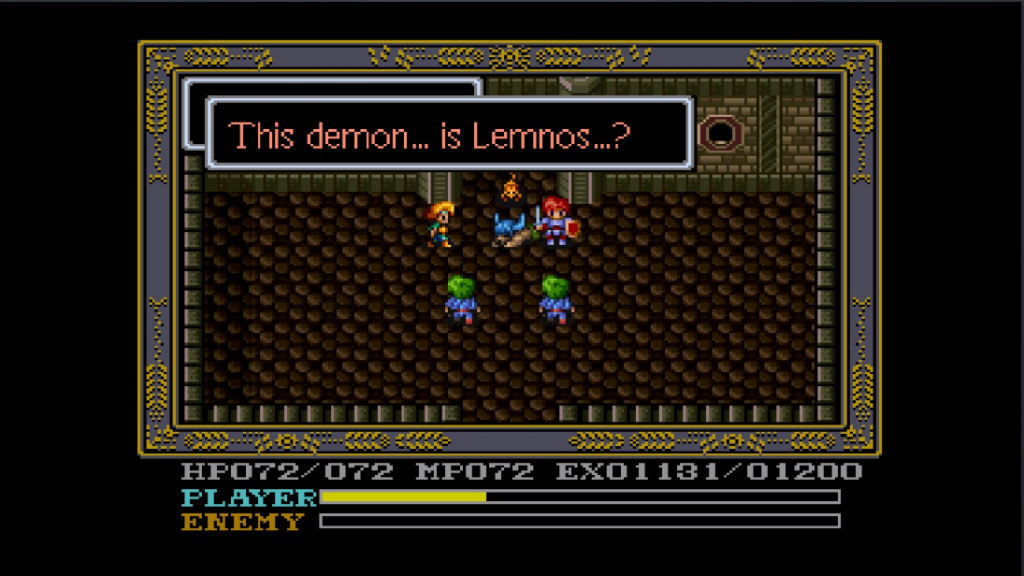
This game also plants the seeds for some important lore involving the Eldeen, an ancient civilization responsible for many of the magical artifacts we see scattered across the series. The asterisk with this is that given that both Tonkin House and Hudson Soft took numerous liberties with the source material it is hard to specify which material was established by Falcom and which these developers decided to make up. When it came to time to remake this story as Memories of Celceta Falcom saw fit to retcon these misinterpretations to eliminate the confusion. The release of the 2005 Taito remake helped to put into perspective that these earlier versions of Ys IV are interpretations of Falcom’s story, and we wouldn’t see the creator’s take on it until 2012 when Celceta was released. That being said, Mask of the Sun was the more faithful version of the 1993 Ys IVs when it came to representing Falcom’s story.
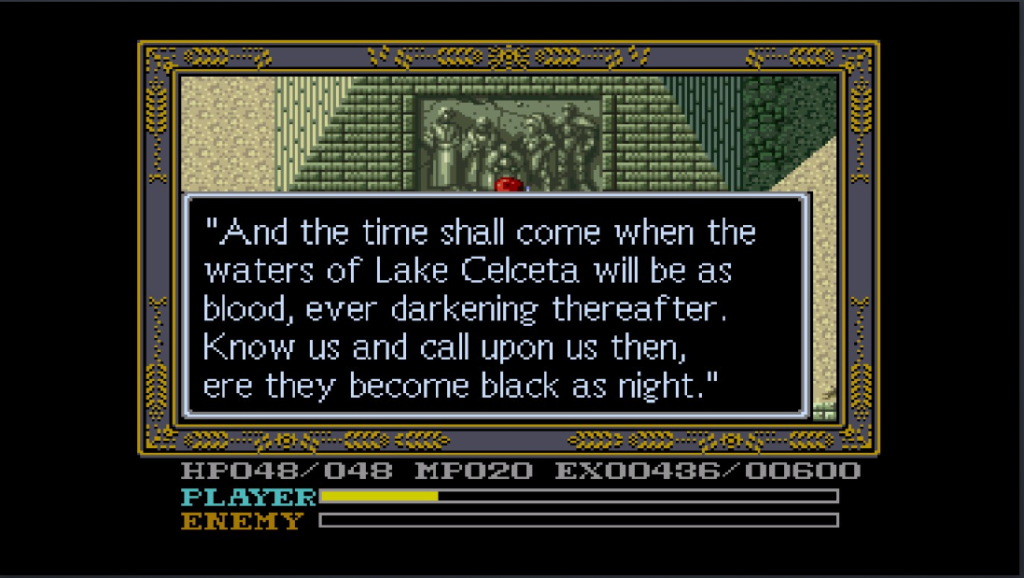
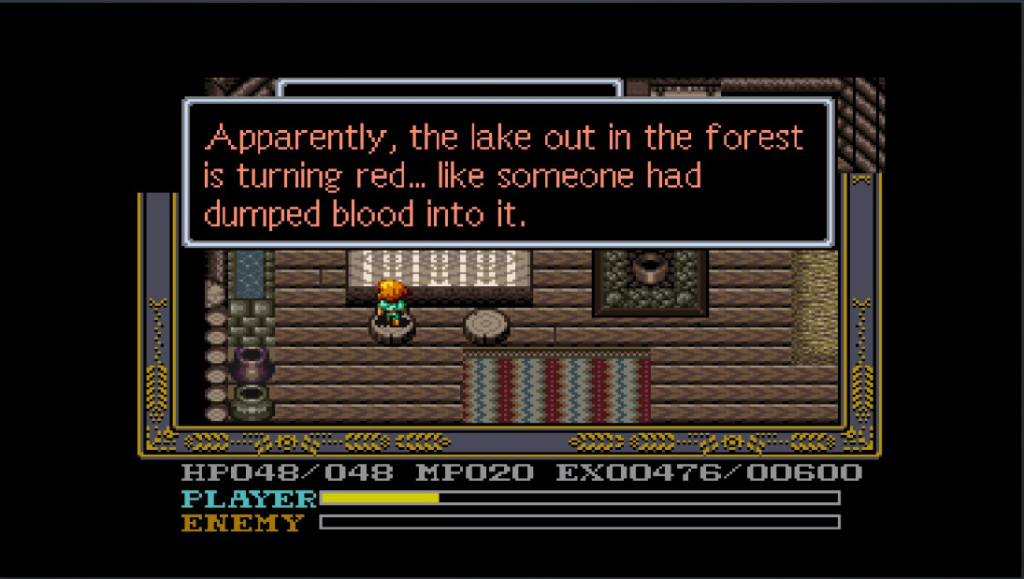
Gameplay
Following the experimentation with a side scrolling RPG in Wanderers from Ys, Falcom’s design outlines had Ys IV return to the overhead view bump style combat as both versions of Ys IV use this style of play. As someone who didn’t care for what Wanderers did and also enjoyed the bump combat of the original duology I was rather eager to return to that style of play. However, this is easily the least polished of the bump combat Ys games. I mentioned earlier that Tonkin House was less experienced as a developer than Hudson Soft, their competitor of which had already developed the PC engine remake of Ys I & II, which did show a foundational understanding of the mechanics of said games.
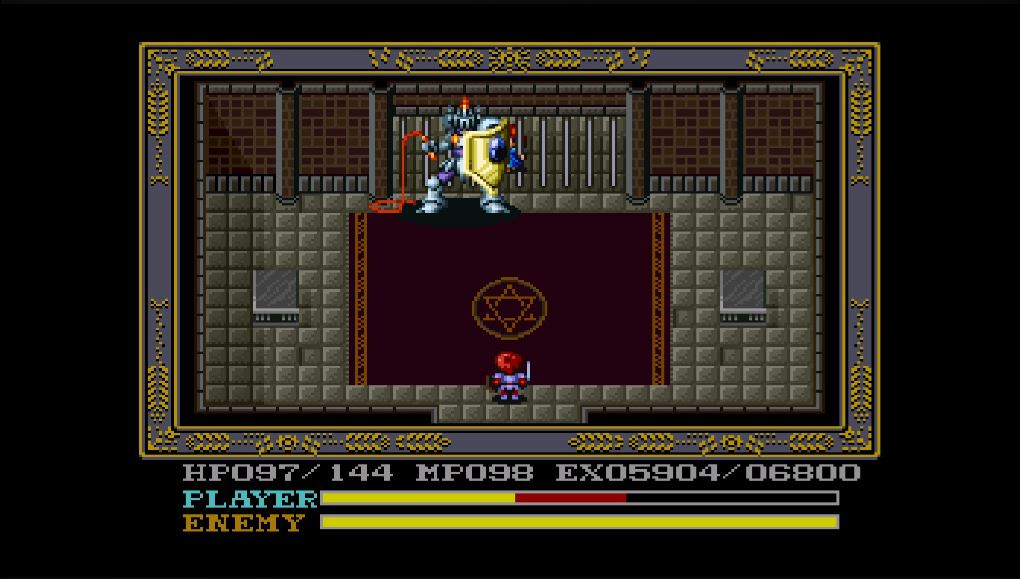
Tonkin House’s history with the series was only that they had developed the Super Famicom version of Ys III. Their earlier library was mostly comprised of sports games, and while they would go on to develop Juggernaut, they had very little experience in making an RPG from the ground up and that is very telling as to how Mask of the Sun turned out. So, let us break down why this doesn’t really work or isn’t fun to play…
Bump combat at its core will see players move into the enemy to do damage, so success in this system is hitting enemies off center to effectively do damage whilst avoiding taking damage yourself. Positioning was also important in the original duology. Mask of the Sun on paper fits along with that style of play, but Tonkin’s inexperience with that style of play quickly presents itself.
First off for context you still only move in the four cardinal directions similar to Ys I & II. However Mask of the Sun greatly increases the movement speed of yourself and enemies, often to the detriment of the game’s design. We won’t see a Ys game move at this speed until the Ys Complete remake, but this game isn’t designed around this new sense of speed.
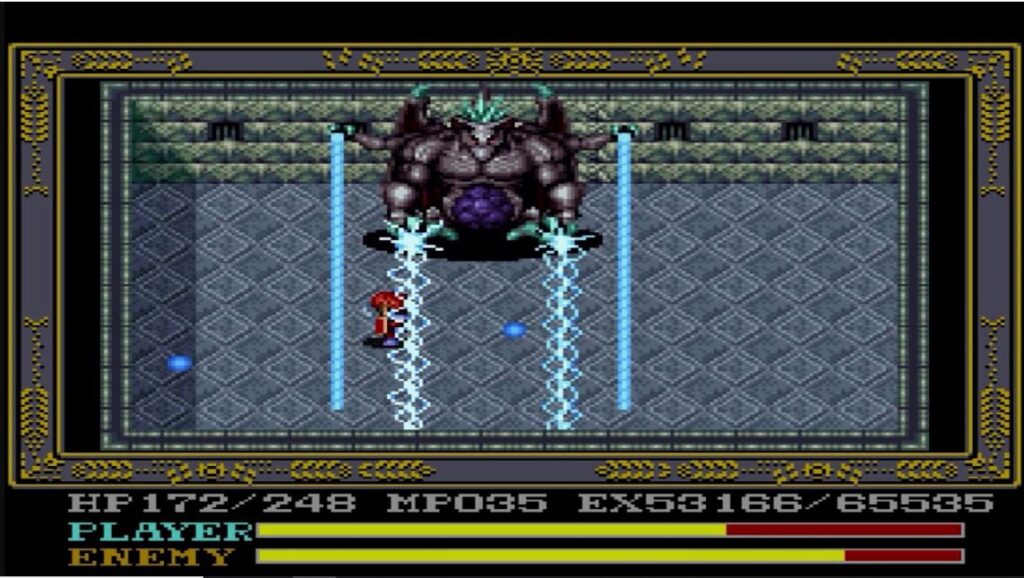
This is especially ironic given that Tonkin’s version of Wanderers was the slowest in terms of gameplay speed. This increased speed makes the previous core tenant of positioning all but meaningless as players can cross the distance between themselves and opposition all too quickly. This speed also applies to your enemies, combine this with the fact that enemies are much better at adjusting their heading upon being hit and you’ll need to maintain constant vigilance lest you wish to see the Game Over screen quite often.
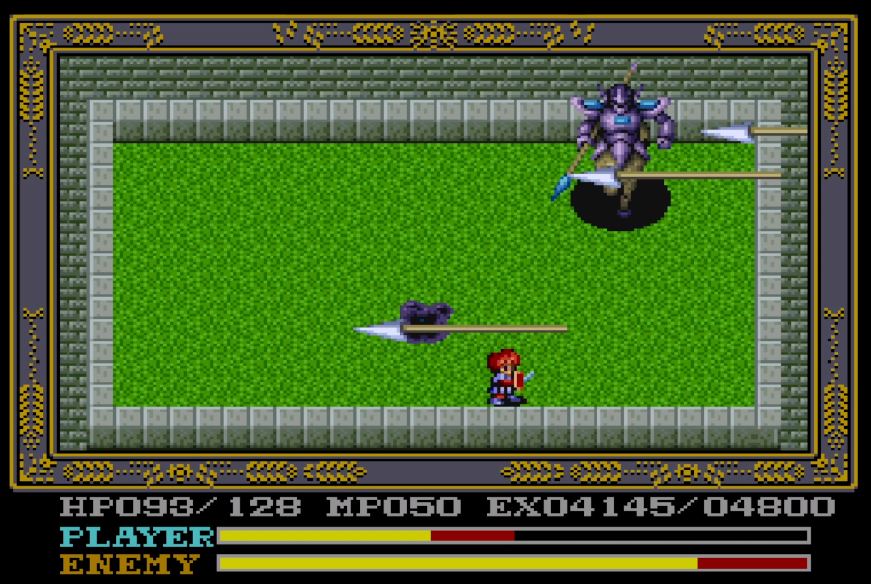
Tonkin’s lack of experience with this style of Ys gameplay is most obvious within boss fights. Bump combat bosses are designed behind the principle of discovering the enemy’s hitbox and exploiting an opening in their attack patterns to deliver an attack of your own. Many of the bosses in the game are only vulnerable to damage during a very specific moment within a certain animation. The game further disrupts your pattern reading of said bosses by throwing in unkillable minions whose only purpose is to distract you from the boss itself. Additionally, many boss encounters will include offscreen stage hazards that intrude upon the boss arena that serve to introduce more unnecessary elements into what makes a visually chaotic spectacle of a boss fight. All these intrusions make me feel less like I’m playing an RPG and more like I’m an arcade shooter avoiding obstacles from every angle.
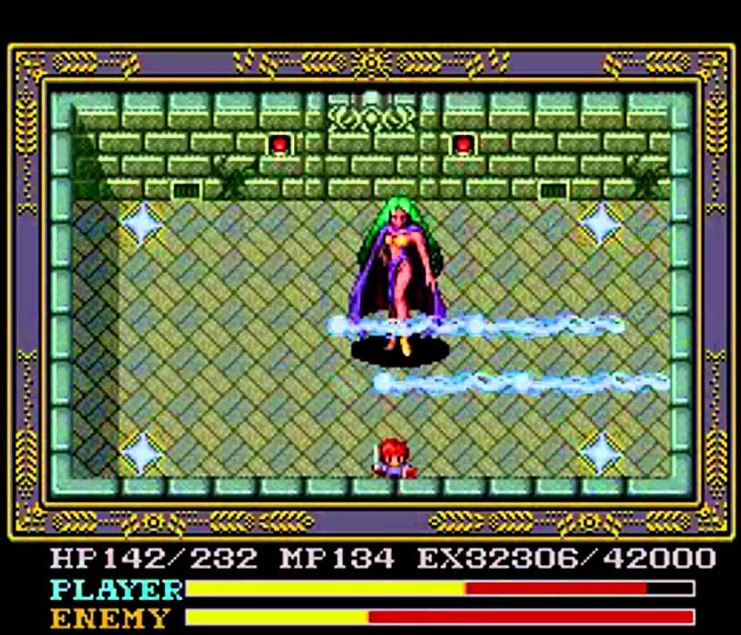
Both iterations of the 1993 Ys IVs were the last Ys games to rely on the traditional “Final boss can only be killed by the plot relevant ultimate weapon,” which was a nice callback to the original duology. Underneath the flawed executions of Mask of the Sun, this game in particular planted a very important mechanical seed in attaching magical skills to the various swords Adol accumulates across the game such as the thunder or fire swords. This idea will later blossom into magically imbued armaments and accessories in games such Ys VI: Ark of Napishtim and Oath in Felghana.
The largest issue with Mask of the Sun as a video game is that it doesn’t feel like Ys, something that is understandable from the perspective of Falcom not making it. What started as a different take on bump combat quickly enough proceeds into a tediously frustrating experience that brings little enjoyment. What good ideas are included in the game are marred by a mediocre execution.
Presentation & Score
Despite the core game not being developed by Falcom, the score for both Mask of the Sun and Dawn of Ys was composed by Falcom Sound Team. Both titles pull from the same pool of music for the most part, yet where and how that music is used differs between games. Mask of the Sun also brings some unique compositions to the table that are found only in this game. The Super Famicom might not have the same power as the PC Engine, but the soundtrack is easily one of the strongest parts of this entire experience. When Falcom got around to making their own version of Ys IV in 2012 for Memories of Celceta the backbone of the score was pulled and re-arranged from this original score for Ys IV. The PlayStation 2 Taito remake of Mask of the Sun used only the original Ys IV with none of the Super Famicon exclusive tracks being present.
Naturally Mask of the Sun has more technical limitations than its Dawn of Ys counterpart as this game works with weaker hardware. Dawn of Ys sees Adol start his adventure in Minea in the land of Esteria before departing for Celceta whilst Mask of the Sun sees Adol depart the Minea docks in the opening sequence. Similarly, Adol actually has to walk from Promalock across the border to Celceta in Dawn whilst Mask of the Sun merely sees him take a carriage to Casnan directly in another scripted sequence.
Something that both of these versions of Ys IV have that you won’t find in Memories of Celcta is the fact that you get to explore an updated land of Esteria as well as the land of Celceta and go back and forth between the two lands at will once you progress far enough into the story.
Conclusion
An unspoken expectation of sequels is for it to at least deliver on what its predecessor provided and in Mask of the Sun’s case it unfortunately doesn’t live up to the highs of the original duology that its attempting to emulate and call back to. True, the game delivers a stronger experience than the likes of Wanderers from Ys, but the game lacks the core design principles that made the original duology fun to play and as a result Mask of the Sun doesn’t feel like a Ys game. What unique elements can be found in this iteration of Ys IV feel undercooked and executed much better in other installments in the series. And with Memories of Celceta providing a much more fleshed out version of this story I can’t recommend this game in good conscience to play except for those who are really curious. I can’t say the same for the next game in this marathon, so see you all next time when we cover Dawn of Ys! Special thanks to OmgFloofy for collaborating on this article!
Patron Shout-Out
As always I wish to extend special thanks to our Patreon supporters who follow and subscribe to our content week after week. We couldn’t do it without you and are eternally grateful for your continued support!:
Francesco
Lisa


